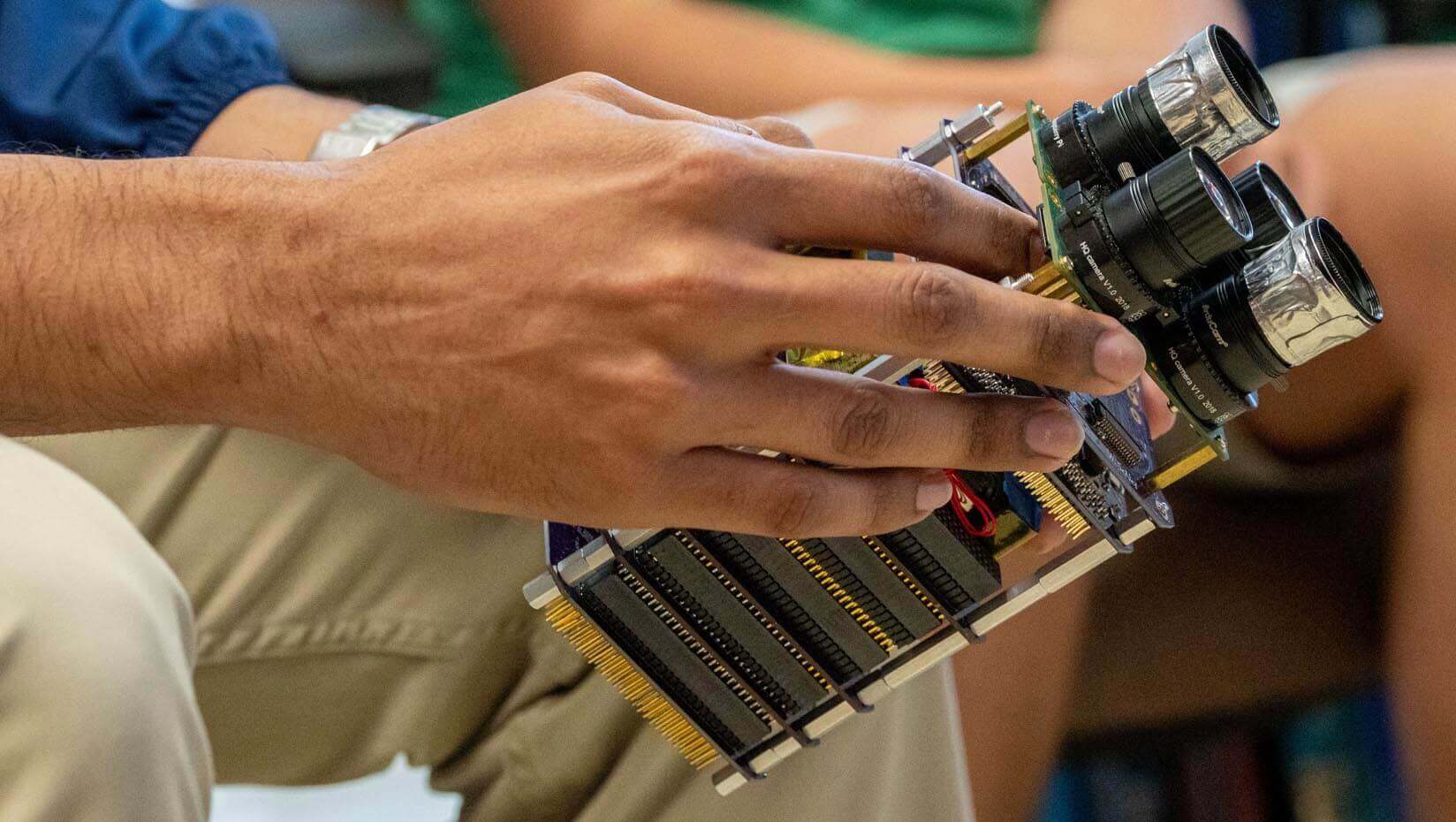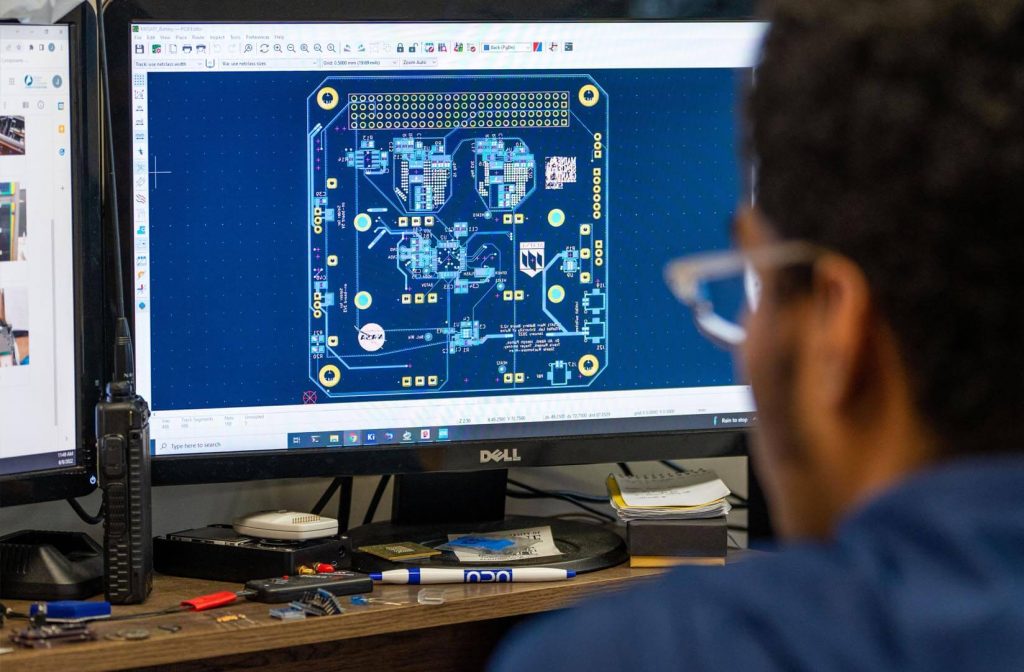
Maine’s first research satellite enters orbit
Editor’s note: This story has been updated to reflect the successful launch of Maine’s first research satellite into orbit early morning on Thursday, July 4.
Maine’s first research satellite launched into the stratosphere in the early morning on Thursday, July 4. During its six-month to two-year orbit, MESAT1 will use its astronomical view to gather climate data about Earth for experiments designed and led by middle and high school students.
MESAT1 is outfitted with four multispectral cameras that take pictures with scientific data about water and energy. The images are then beamed to the satellite’s ground control station at the University of Maine and shared with the K-12 research teams.
“Access to space data motivates and excites students to learn fundamental skills in mathematics and science and helps them see the importance of STEM careers. Analyzing the data portrays a clear picture of climate for the students and gets their creative minds thinking on how to mitigate those issues,” said Ali Abedi, associate vice president for research at the university who leads the UMaine Space Initiative and oversaw the project.

The cost-effective research nanosatellite was designed, built and tested by UMaine students and faculty in collaboration with a trio of K-12 schools, the University of Southern Maine, the Radio Amateur Satellite Corporation and the Wells National Estuarine Research Reserve. Grants from NASA and Maine Space Grant Consortium supported the project.
“Electrical and Computer Engineering students at the University of Maine conducted a significant amount of research to learn, design, and optimize subsystems in a spacecraft,” Abedi said. “Along the way they made several discoveries and published several papers to push the boundaries of knowledge in wireless communication, satellite imagery, and space technology.”
MESAT1 will hitch a ride aboard Firefly Aerospace’s Alpha rocket as a part of NASA’s CubeSat Launch Initiative. Dubbed “Noise of Summer,” the live-streamed launch from Space Launch Complex 2 at Vandenberg Space Force Base in California will lift and deploy eight satellites for NASA’s initiative into low Earth sun-synchronous orbit.
More information about MESAT1’s development and the research projects it empowers is available online.
Contact: Erin Miller, erin.miller@maine.edu
